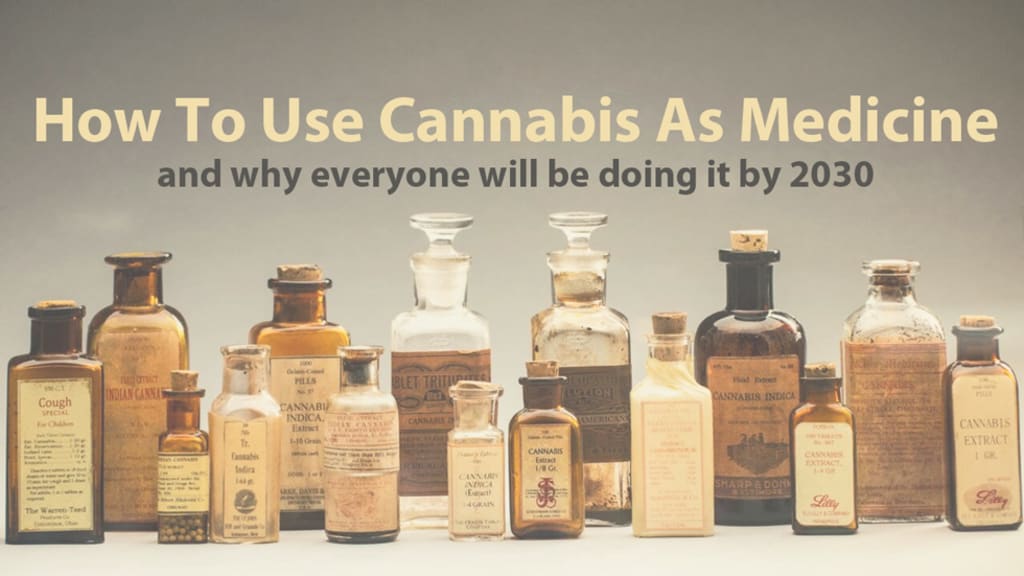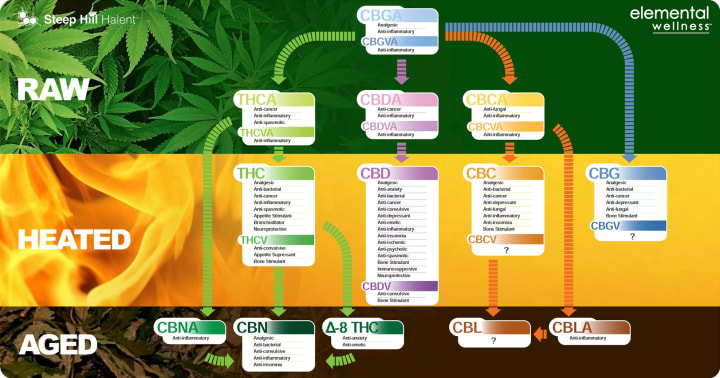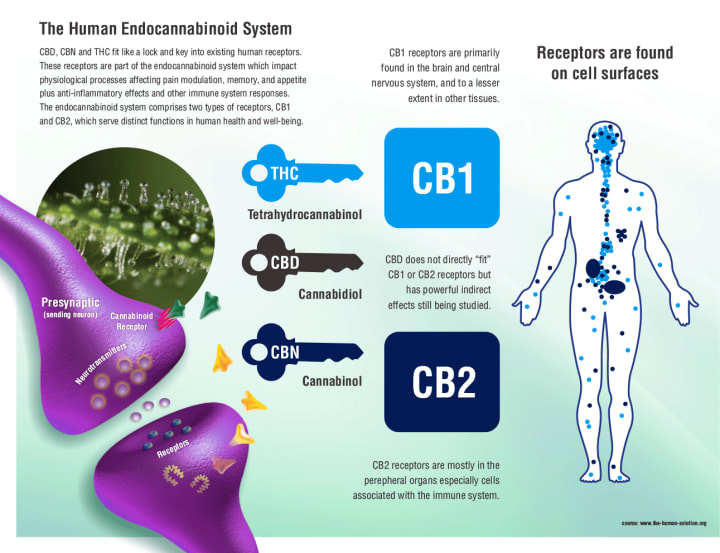How To Use Cannabis As Medicine
And why everyone will be doing it by 2030.

Cannabis has been used as a medicinal plant for millennia. Across continents and throughout every type of society, humans have been using cannabis for health and wellness for longer than mankind has been writing down their ideas.
Originally introduced to Western medicine by W.B O’Shaunghnessy in 1841, physicians began to prescribe cannabis for a whole host of ailments including: headaches, muscle pain, epilepsy, and even rabies. During the 1800’s and early 1900’s cannabis became so widely used in North America that there were more than 100 papers published in the Western medical literature recommending it for various illnesses and discomforts.
Up until the early 1890’s doctors continued to prescribe cannabis, including H.A. Hare who recommended cannabis to subdue restlessness and anxiety, or distract a patient’s mind when dealing with a terminal illness, or to relieve all types of pain. Cannabis became such a common ingredient that eventually medicinal preparations were sold over the counter at your local pharmacy. These were the good old days.
You’re probably asking yourself, how did we get from there to cannabis being considered a controlled substance with no medicinal value? Good question. While we could debate how and why cannabis became rescheduled as a narcotic, there are plenty of well written pieces on the subject that you can read. Here, here and here.
There’s enough misinformation and rhetoric about cannabis on the internet and probably even your local newspaper to sink a ship. Unfortunately, there isn’t as much talk about the actual research that’s happening here in North America and around the world - despite the fact that we’ve had scientific proof of the medicinal benefits of cannabis for over 40 years.
More recently, research into this mysterious plant has shown that cannabis is not only good for you, but our bodies are built for it, and without it we seem to be getting sicker and sicker. With public opinion shifting and regulations here in Canada slowly making their way towards full legalization, the use of cannabis as medicine is quickly becoming one of the greatest medical advancements of our time.
Fighting over 60 years of prohibition and widespread misinformation about this leafy green plant has made full-blown adoption of the medicine an uphill battle. But with determined parents, physicians and advocates leading the way I predict cannabis will return to its former glory and take its place in every medicine cabinet across North America, if not the world, by 2030.
Bold statement? Only if you haven’t read the science. This is your grandma’s medicine and it’s making a strong comeback.
What we know about cannabis science
In 2006 The Economist wrote, “If cannabis were unknown, and bio-prospectors were suddenly to find it in some remote mountain crevice, its discovery would no doubt be hailed as a medical breakthrough. Scientists would praise its potential for treating everything from pain to cancer, and marvel at its rich pharmacopoeia—many of whose chemicals mimic vital molecules in the human body.” While cannabis isn’t quite receiving that type of welcoming into the medical community just yet, it does make progress every day.
To date there are over 23,000+ research articles on the science and safety of cannabis, which means there’s a heck of a lot more scientific data about the cannabis plant than most people realize. For instance, did you know that recent studies have shown that cannabis is not a gateway drug, but actually an exit drug lowering opioid use? Or that cannabis is a neuroprotectant which means instead of killing your brain cells it actually helps protect them and grow new ones. Or even that migraines, irritable bowel syndrome, and even fibromyalgia can be treated with cannabis? Basically everything you’ve ever been taught or heard about cannabis is probably wrong.
So let’s clear things up, shall we.
First, it’s important to note that being properly educated about your cannabis medicine means getting familiar with the science and adopting some new vocabulary. Some people may understandably find themselves intimidated by the big words that doctors and scientists use to talk about cannabis medicine (we know words, we have all the best words, they’re big words and you’re gonna love them). But, knowing the science and understanding the facts will become your trump card for getting the most out of what cannabis has to offer.
To understand how cannabis is being used as a medicine today, we’re going to follow the science. Dr. Raphael Mechoulam, who is widely renowned as the father of cannabis research, has been studying the cannabis plant and its medicinal properties in Israel for over 40 years. While much of his research has all but been ignored by North American physicians and law makers until recently, he and many of his colleagues throughout the world continue to test cannabis in labs and clinical settings leading to new discoveries every year.
Cannabinoids: the medicinal foundation of the cannabis plant
To the unknowing eye, the mature cannabis plant looks like something you would find growing wild in a tropical paradise. But when you get close enough to see the crystal covered flowers and smell its pungent aroma, your instincts will tell you this is one very special plant. Cannabis is known to contain over 500 physiologically active compounds making it one of the most complex plants in the world. It also produces the most cannabinoids and terpenes found in any plant species on earth. Cannabinoids and terpenes are important for every cannabis user to understand as they are the main medicinal compounds that give cannabis its healing properties – and they’re the two most important words to add to your cannabis knowledge bank.
The two primary cannabinoids we talk about most in cannabis are Delta-9 Tetrahydrocannabinol more commonly known as THC and Cannabidiol or CBD. These phytocannabinoids – which simply means plant based - work by mimicking the compounds naturally produced in the human body called endocannabinoids (endogenous; originating within an organism). Yes, that means you already have cannabinoids in your system even if you’ve never ingested cannabis! But we’ll talk more about that in a minute. And truthfully we’re only just scratching the surface. While THC and CBD are widely discussed, there are many other cannabinoids at play in the cannabis plant like CBG, CBN and CBE. Some cannabinoids also shift and change offering various medicinal properties as they are heated or aged. Check out the chart below for an overview of the cannabinoids that have been identified so far.

Cannabinoids are incredibly special on their own, but when they’re surrounded by the other compounds in the cannabis plant they begin to produce exceptional results. It’s sort of like the Kardashians; when they go out alone they can often go unnoticed, but when they travel in packs with their posse of body guards or model friends, the paparazzi swarms. So who, or in this case what, is on the inside of this badass cannabis squad? Terpenes.
Terpenes: the beautiful concert of aromas and flavours in the cannabis plant
Terpenes are the pungent oils that give cannabis flowers their distinctive flavors - like citrus, berry, mint, and pine - as well as the feel or ‘vibe’ when it’s consumed. Here’s a fun fact, you already experience terpenes in your everyday life. When you’re strolling through a beautiful Canadian coniferous forest and your nose fills with that wonderful pine scent; that’s pinene at work. Or on a warm summer day when the sweet floral aroma of lavender floats on the air; that’s linalool doing her thing. If you’re an essential oils diffuser lover like I am, then you’ve probably got a whole slew of little bottles filled with terpenes in your possession already.
The effects these different terpenes have on your brain and body can vary widely. Some are especially useful for relieving stress, while others promote mental focus and clarity. Myrcene, for example, can be used to help induce sleep whereas limonene elevates mood. With over 100 different terpenes currently identified in the cannabis plant, it’s important to remember that each individual strain expresses a unique mix of terpenes and cannabinoids with varying potencies. Keeping track of these details for each strain you consume will help you determine which combinations work best for your system and your medical concerns.
Some of the most exciting and interesting research we’re seeing today is focused on the ability of terpenes and cannabinoids to interact with each other to enhance or moderate their collective effects. Turns out, cannabis works most effectively when she has her full squad at her side. Natures perfect balance. For example, pinene helps counteract that fuzzy memory feeling that can be caused by THC. Combining terpenes like pinene, myrcene, and caryophyllene helps combat anxiety, while mixing the terpenes linalool and limonene with the cannabinoid CBG shows promise in the treatment of MRSA a staph based bacteria “superbug”. The potential combinations are endless.
What’s better, they’ve actually given this phenomenon a name that’s easy to remember; it’s called the Entourage Effect. It’s this synergistic interaction of the compounds within the cannabis plant that will put cannabis back in mainstream pharmacopeia and lead us to grow hyper-specific strains that act on individual diseases and ailments.
The endocannabinoid system: how the human body maintains overall homeostasis
Cannabinoids and terpenes are important to understand because they are part of a larger picture. They act as the drivers of a profoundly important system in our bodies called the endocannabinoid system (ECS). If this is the first you’re hearing about this vital system, don’t worry you’re not alone. We only discovered its existence back in the 80’s and we’re all still playing a little catch up. The truth is they still aren’t teaching this stuff in medical school. But, don’t worry you won’t need a medical degree to understand it. It’s actually pretty simple, for a complex system.
While Dr. Mecholum and his team hit a major breakthrough when they identified and isolated CBD and THC back in the 30’s, it wasn’t until the mid 1980’s that another dedicated scientist named Professor Allyn Howlett discovered a specific receptor in the brain that interacts with the cannabinoid THC, which she called the CB-1 Receptor.
Finding this receptor led researchers to ask one very important question; why are there receptors in the human brain for cannabis? Their answer came in the form of another pivotal discovery. In 1988 Dr. Mechoulam and his team discovered the first endocannabinoid, which they dubbed Anandamide. Named after the Sanskrit word for “bliss”, this endogenous compound is believed to be responsible for the intangible optimism of the human spirit - which might give you a glimpse into what Dr. Mechoulam and his team think about the cannabis plant. To date they have found one other endocannabinoid, 2-Arachidonolyglycerol or 2-AG for short.
The discovery of endocannabinoids is significant to say the least. It tells us that our bodies are built for cannabinoids and that we need them to maintain optimal health. Additional receptors have been identified since Professor Howlett’s first discovery; CB-1 receptors which reside primarily in the brain and CB-2 receptors which exist throughout the body.
Here’s where it all starts to come together. When you map these receptors they create an intricate web or network that covers every major organ and system in the body.

Deeper research into this complex system has shown us that the ECS governs cellular balance throughout our entire body giving us the capacity to respond to disease, illness, and injury. It’s also responsible for regulating: mood, appetite, bone growth, pain perception, memory, male and female reproductive systems, sleep, tumor regulation, inflammation, temperature, muscle movement, protection of nerve and brain cells, stress management, digestion, and so much more.
The CB receptors throughout the brain and the body act like key holes that become activated when a cannabinoid, whether endogenous or from cannabis, attaches to it. When a cell is under stress or there is an imbalance in the system, the ECS begins to produce extra cannabinoids to correct the issue and restore balance. However, if you suffer from an endocannabinoid deficiency your ECS could be susceptible to dysfunction or disruption compromising your ability to heal. Endocannabinoid dysfunction or deficiency has been linked to health challenges including migraines, fibromyalgia, irritable bowel syndrome, inflammation, depression and anxiety.
This is the incredible reason cannabis has such vast therapeutic uses. With the widespread distribution of cannabinoid receptors throughout the body, this one plant could potentially be used to treat everything from cancer to epilepsy, Alzheimer’s, diabetes, drug addiction, mood disorders, chronic pain, autism and more. Understanding the medicinal and therapeutic benefits of cannabinoids and terpenes, and how they interact and relate to each other in your body is essential to effectively using cannabis as medicine.
Bringing all together, so that you can feel better
You have a system in your body that’s built for cannabinoids. Chances are if you’re experiencing chronic health issues you may have an endocannabinoid deficiency – meaning your body isn’t producing enough endocannabinoids on its own. This is where cannabis comes in and why as a species we’ve been using it as medicine for thousands of years. What we now have scientific proof for; we intrinsically knew many moons ago. This sticky aromatic plant is in fact one of the most valuable and versatile medicines available on this planet.
When you consume cannabis, the cannabinoids from the plant bind to the receptors throughout your brain (CB-1 receptors) and your body (CB-2 receptors), depending on which cannabinoids were present in the strain you consumed. THC is mostly widely known for is psychoactive effects as it fits like a lock and key with our CB-1 receptors found mostly in the brain. However, new research shows that THC has much more to offer than just psychoactivity, it’s also used for reducing inflammation, curbing seizures, preventing nausea and vomiting and promoting appetite. Whereas CBD works primarily on the CB-2 receptors throughout the body and are found to be plentiful in the gut, spleen, liver, heart kidneys, bones, blood vessels, lymph cells and even the reproductive organs.
This is why it’s imperative that you’re purchasing cannabis from a retailer that provides full reporting on their various strains. If you don’t know which mixture of cannabinoids and terpenes are present in your beautiful bud, you won’t be able to predict what kind of results you might get. Although the great Indica vs. Sativa debate is still alive and well in some circles, knowing whether your chosen strain is an Indica or a Sativa isn’t enough. Some Indica strains have incredibly high levels of THC which would give you an uplifting energetic high, which is great unless you were looking for a relaxing sedative. Whether your favourite strain is an Indica, Sativa or a Hybrid, it’s the cannabinoids and the terpenes that work together to create the medicinal effects and it’s these values you should be looking for on your next trip to the dispensary, or on your next call to your favourite Licensed Producer.
You might be shocked, like I was, to learn that this this growing foundation of science and knowledge about the cannabis plant, cannabinoids and the endocannabinoid system has been overlooked for so long. However I presume if you’re reading this you’re determined to not let that stand in the way of real science and true progress. The more of us that make the conscious decision to dive into the facts and learn as much as we can about cannabis and our bodies, the better we’ll all be.
About the Creator
Rachel Colic
Rachel is a seasoned brand strategist, creative storyteller and cannabis writer and advocate based in Toronto.






Comments
There are no comments for this story
Be the first to respond and start the conversation.